Кварцевые настенные часы Samay Quartz, обзор и разборка
Настенные кварцевые часы сегодня - это в большинстве своем китайский массовый продукт, что-то среднее между халтурой и хламом... они не отличаются точностью хода, качеством изготовления, они стоят дешево и служат недолго. Однако бывают исключения.
+ Щелкайте по фото, чтобы увеличить!
Сегодня мы познакомимся с настенными кварцевыми часами, сделанными в Индии, их и позиционируют как нечто более качественное, и стоят они дороже. Посмотрим - есть за что переплачивать?
Внешний осмотр часов
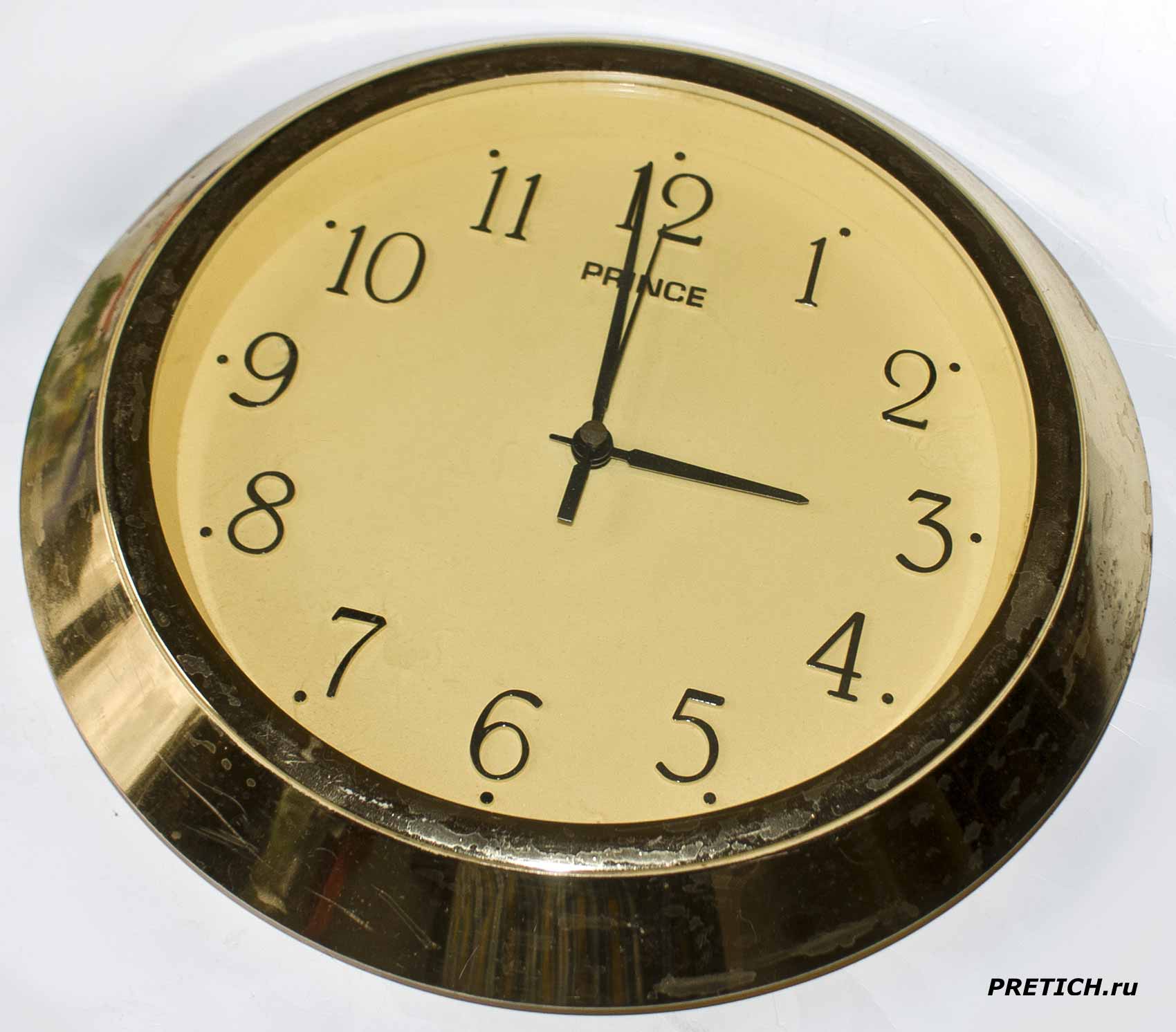
Корпус часов круглый, снаружи конической формы кольцо - окантовка "золотого" цвета, зеркальная, диаметр корпуса 250 мм. Затем идет циферблат, он имеет диаметр 190 мм. Корпус - пластмасса...
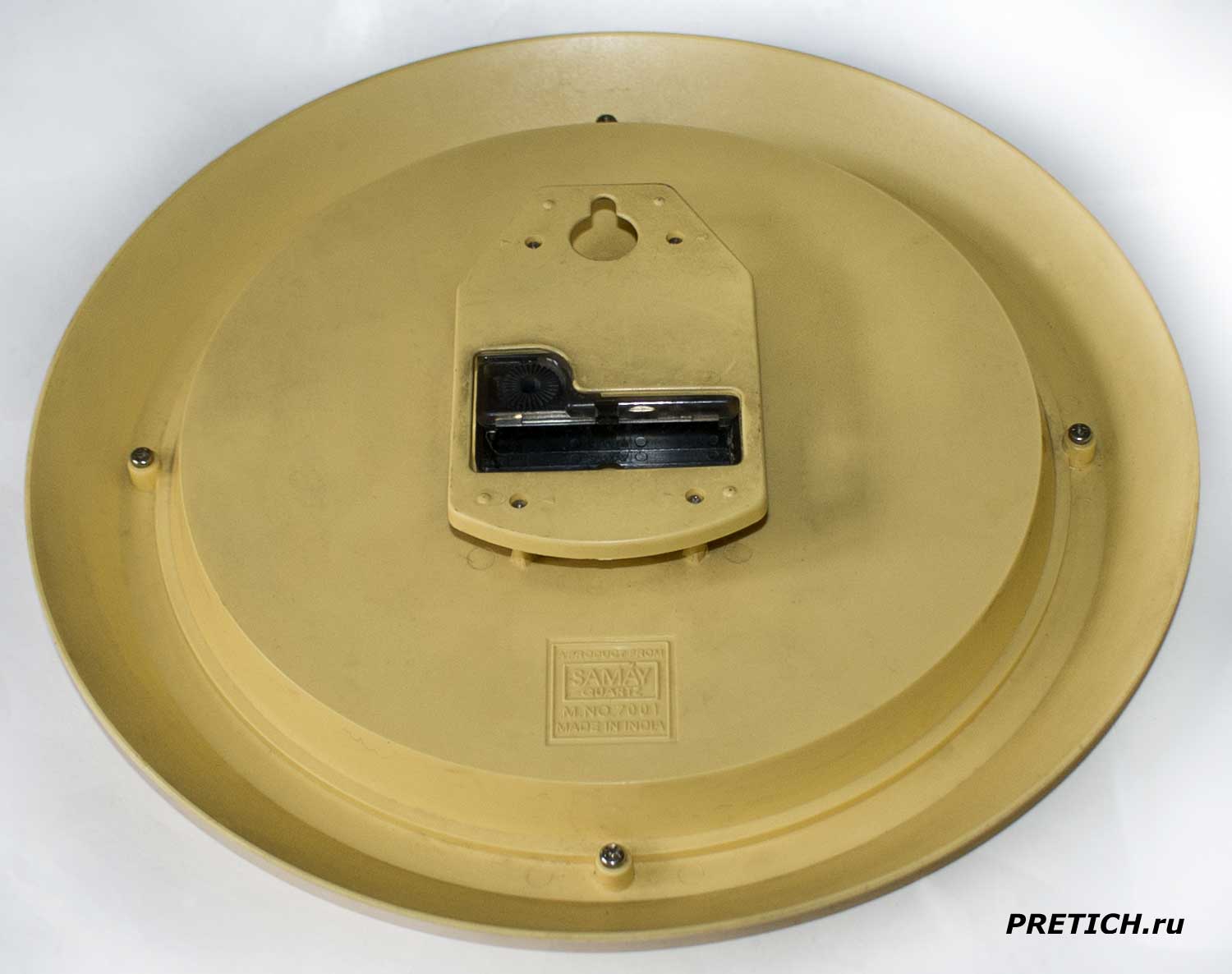
Обратная сторона вот такого желтого цвета... Кварцевый механизм прикрыт кронштейном, который служит для навески на стену (у него там петелька).
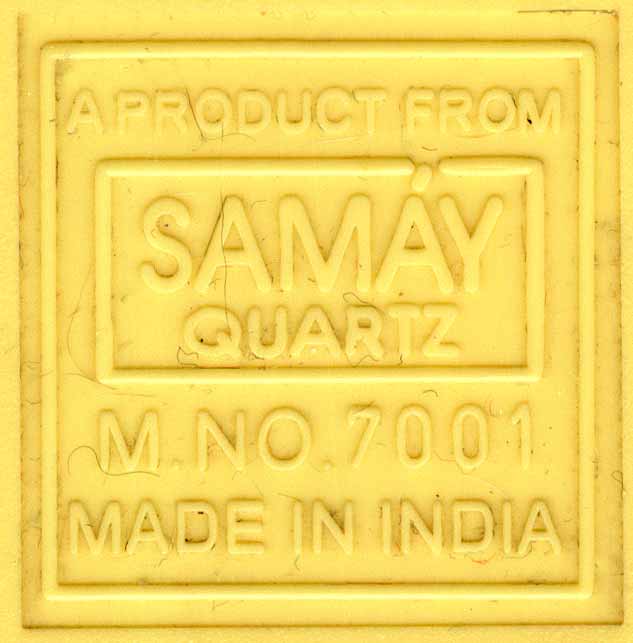
Ниже в пластмассе "выбита" этикетка устройства: A Product from Samay Quartz M NO 7001 Made in India.
Разборка кварцевых часов
Приступаем к разборке - часы в рабочем состоянии, но я решил ими пожертвовать и потому разборка будет в один конец.
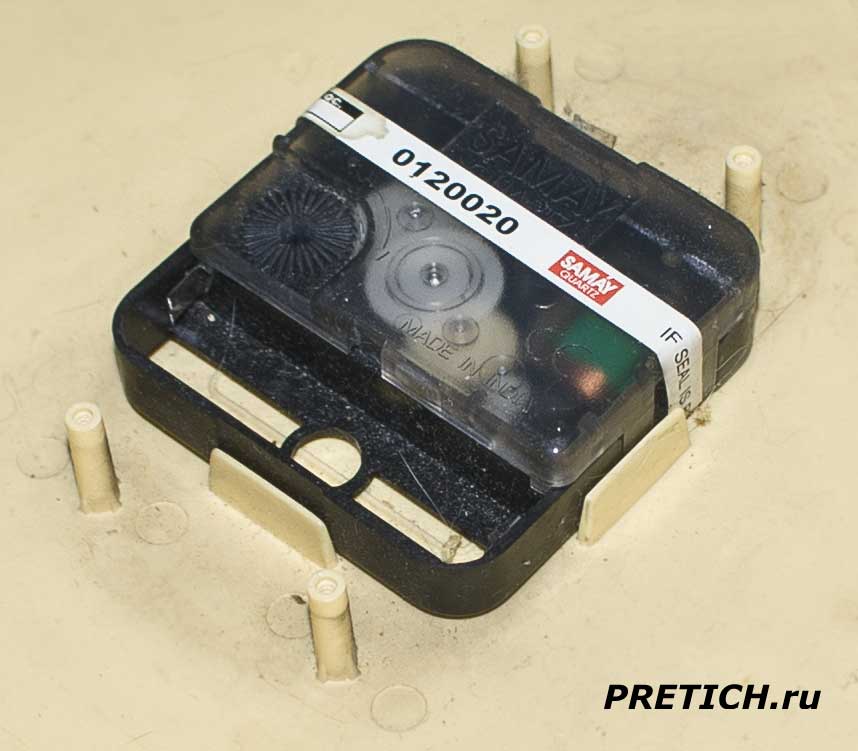
Вначале откручиваем четыре винта и снимаем пластмассовый монтажный кронштейн, который не просто прикрывает механизм, но и держит его на корпусе. Не спешим снимать механизм.
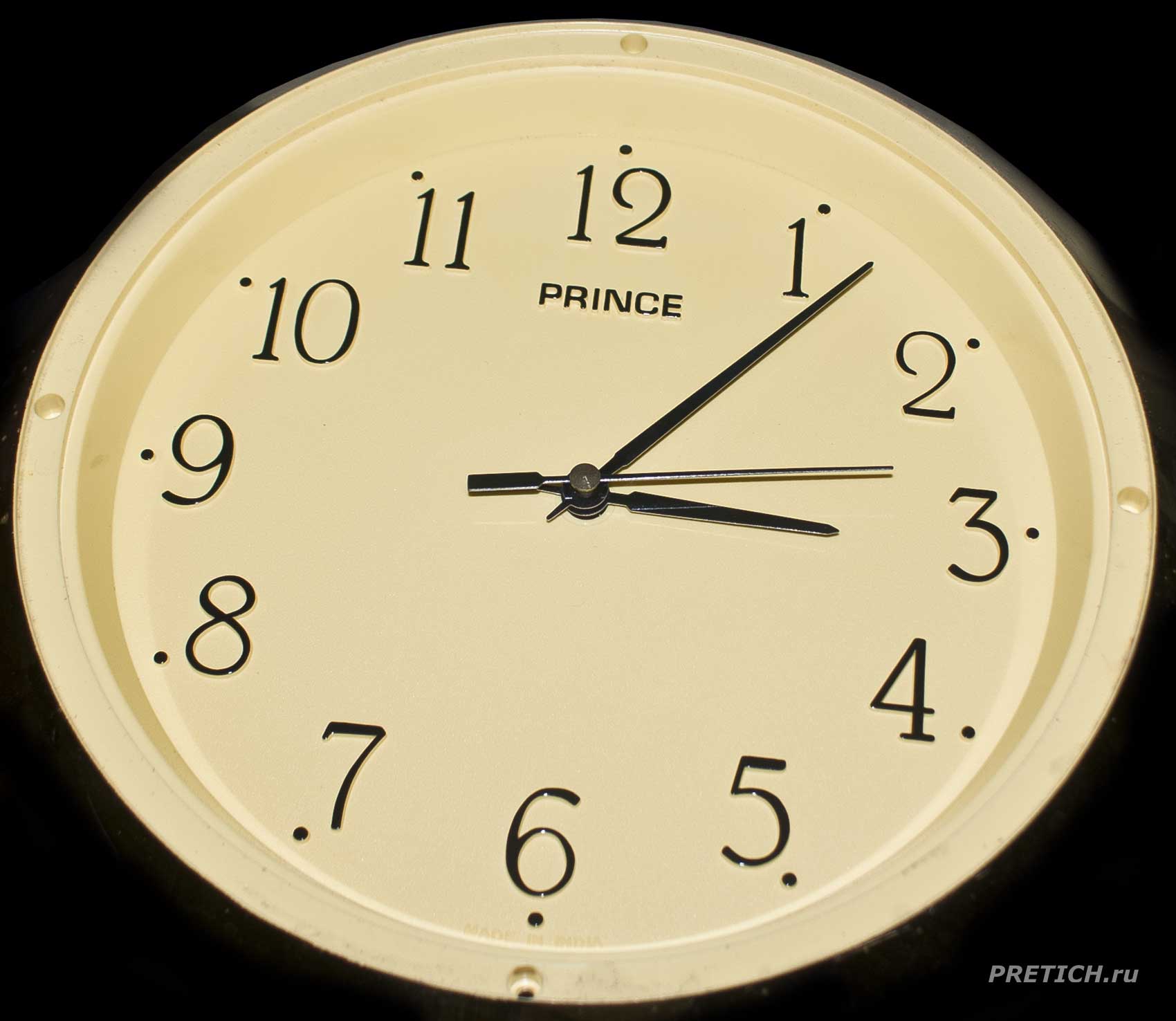
Откручиваем четыре винта по кругу и снимаем с передней стороны блестящее кольцо (под золото), оно держит защитное стекло - стекло настоящее. Как видим, циферблат и стрелки сделаны строго и ничего лишнего. На циферблате написано название PRINCE...
Специальным инструментом или просто двумя отвертками снимаем стрелки. Они алюминиевые. Убираем механизм.
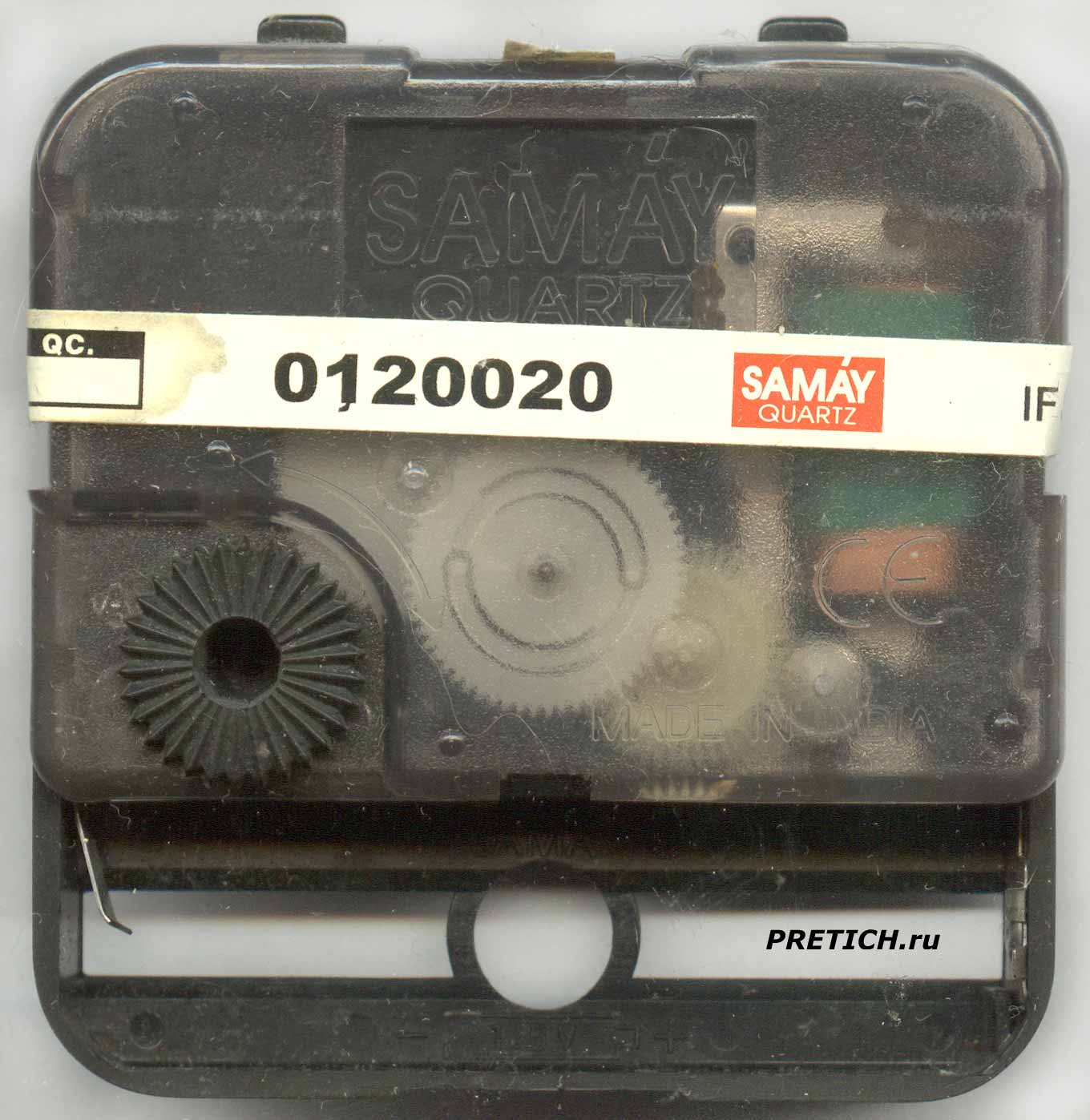
Вот он такой... Нигде не указано название или модель этого механизма. Зато он оклеен бумажной лентой - видимо это гарантийный стикер. На нем и логотип производителя, и всякие прочие надписи... например - 0120020...
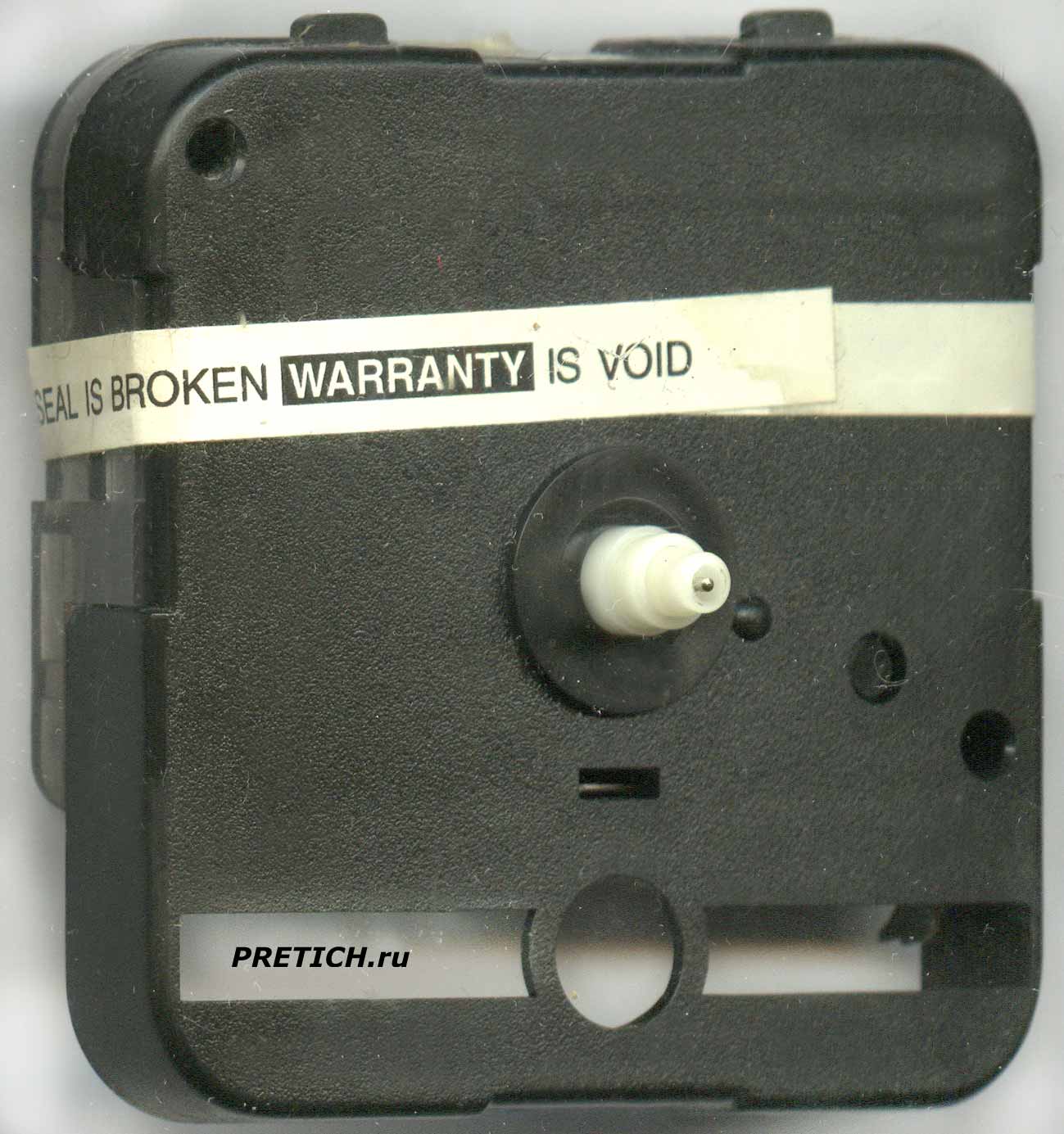
Механизм с лицевой стороны (если так можно выразиться)...

Снимаем с механизма верхнюю крышку, аккуратно - чтобы не растерять шестеренки! В принципе, ничего особенного - все стандартно.
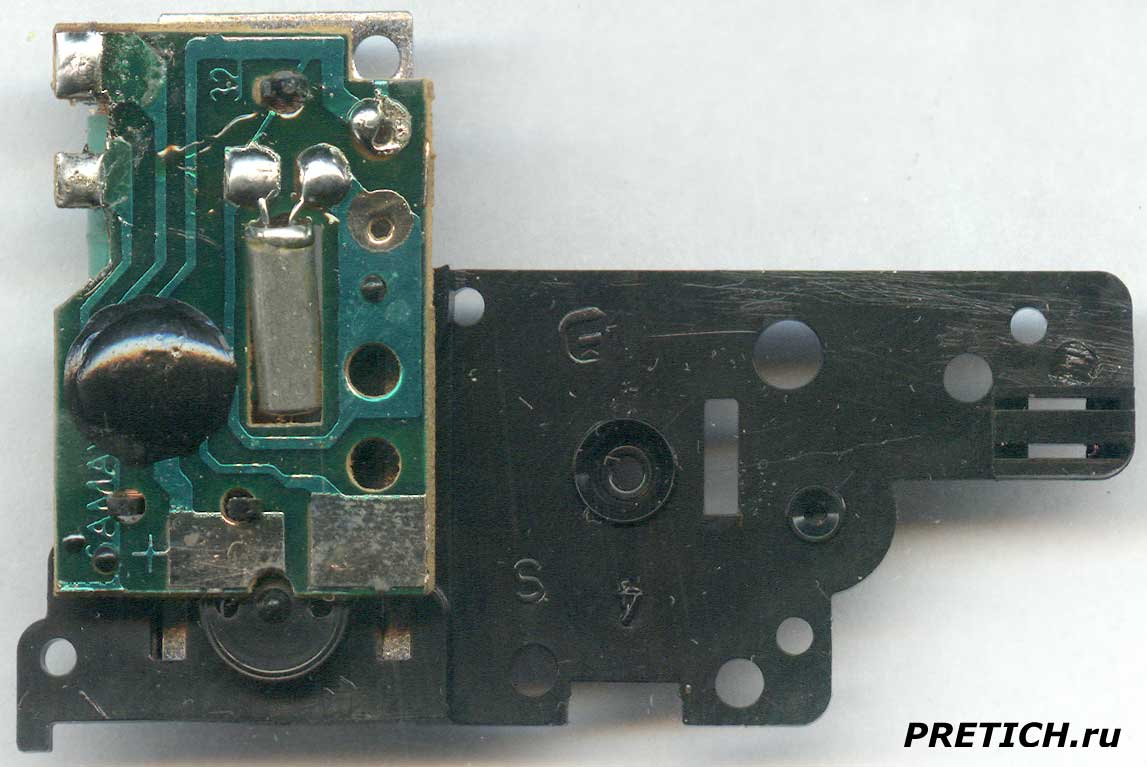
Это, так сказать "сердце" механизма - плата электроники: есть маркировка Samay, бескорпусная микросхема, залитая компаундом, Кварцевый резонатор. Две контактные площадки - под выводы с батарейки.
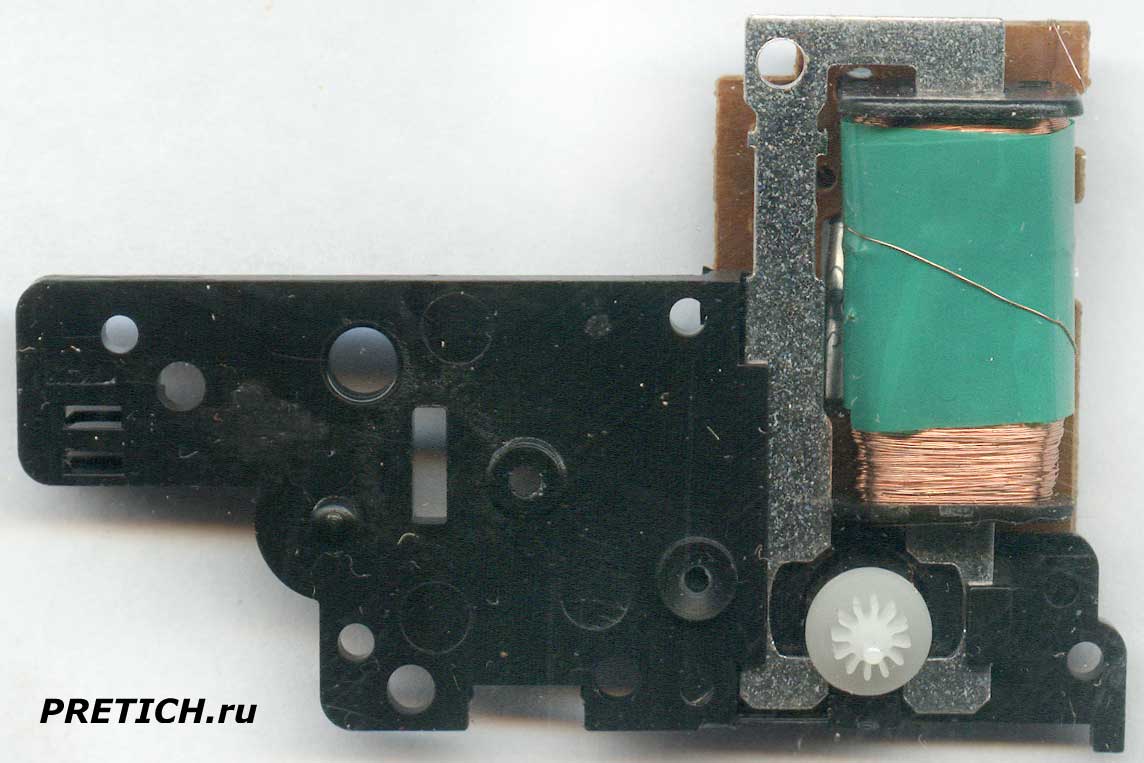
Обратная сторона этого узла, здесь обычный шаговый двигатель...

Ну а это плата с обратной стороны... Видим маркировку на кварцевом резонаторе ST83.
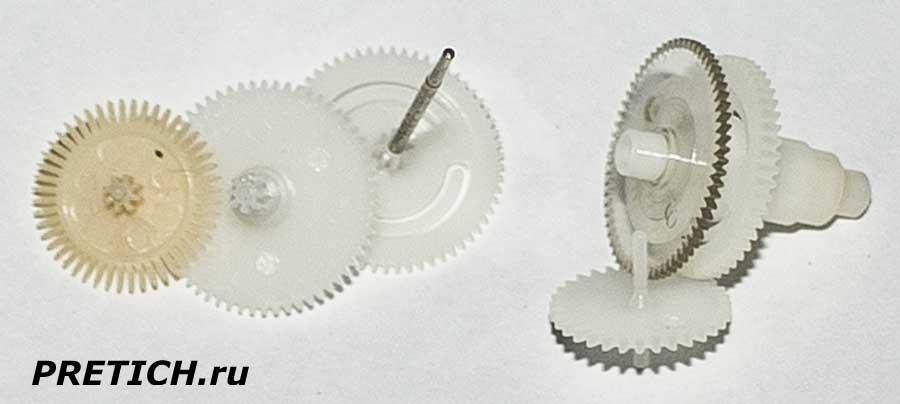
Это шестерни механизма - пластмасса, лишь у одной стальной триб (ось), на который насаживается секундная стрелка.
Подведем выводы
Итак, часы вроде бы сделаны неплохо, качественная пластмасса, стекло впереди. Очень удобный циферблат и стрелки. Часы идут сравнительно точно, достаточно тихие. Неплохо... Но нет качественного превосходства, в Китае делать порою не хуже, иной раз и лучше.
Мой вывод: что китайские, что индийские часы - разницы почти нет.
Михаил Дмитриенко, специально для PRETICH.ru
10.08.2023
Prince Samay Quartz №7001 wall clock
Quartz wall clock Samay Quartz, review and disassembly
Quartz wall clocks today are mostly a Chinese mass product, something between hack and rubbish... they do not differ in accuracy, workmanship, they are cheap and do not last long. However, there are exceptions.
+ Click on the photo to enlarge!
Today we will get acquainted with a quartz wall clock made in India, and they are positioned as something of a higher quality, and they are more expensive. Let's see - is there anything to overpay for?
Watch external inspection
The watch case is round, on the outside of the conical shape there is a ring - a border of "golden" color, mirror, case diameter is 250 mm. Then comes the dial, it has a diameter of 190 mm. Body is plastic... The reverse side is of such a yellow color... The quartz movement is covered with a bracket that serves to hang it on the wall (it has a loop there). Below, the label of the device is "embossed" in the plastic: A Product from Samay Quartz M NO 7001 Made in India.
Disassembly of a quartz watch
Let's start the disassembly - the watch is in working order, but I decided to donate it and therefore the disassembly will be one way. First, we unscrew the four screws and remove the plastic mounting bracket, which not only covers the mechanism, but also holds it to the case. We are not in a hurry to remove the mechanism. We unscrew the four screws in a circle and remove the shiny ring (under gold) from the front side, it holds the protective glass - the glass is real. As you can see, the dial and hands are made strictly and nothing more. The name PRINCE is written on the dial...
Remove the arrows with a special tool or just two screwdrivers. They are aluminum. We remove the mechanism. Here it is... Nowhere is the name or model of this mechanism indicated. But it is pasted over with paper tape - apparently this is a warranty sticker. It has the manufacturer's logo, and all sorts of other inscriptions ... for example - 0120020... The mechanism from the front side (if you can say so)... We remove the top cover from the mechanism, carefully - so as not to lose the gears! In principle, nothing special - everything is standard.
This, so to speak, is the "heart" of the mechanism - the electronics board: there is a Samay marking, a frameless microcircuit filled with compound, a quartz resonator. Two contact pads - under the conclusions from the battery. The reverse side of this assembly, here is a conventional stepper motor...
Well, this is the board on the reverse side... We see the markings on the ST83 quartz resonator. These are the gears of the mechanism - plastic, only one steel pinion (axle), on which the second hand is mounted.
Let's sum up the conclusions
So, the watch seems to be made well, high-quality plastic, glass in front. Very comfortable dial and hands. The clock is relatively accurate, quite quiet. Not bad... But there is no qualitative superiority; in China, sometimes doing it is no worse, sometimes even better. My conclusion is that there is almost no difference between Chinese and Indian watches.
Mikhail Dmitrienko, especially for PRETICH.ru
10.08.2023 |

